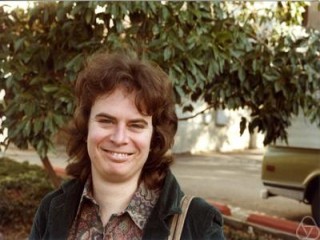
Karen Uhlenbeck biography
Date of birth : 1942-10-24
Date of death : -
Birthplace : Cleveland, Ohio, U.S.
Nationality : American
Category : Science and Technology
Last modified : 2011-08-30
Credited as : Mathematical researcher, professor,
The mathematical research conducted by Karen Uhlenbeck has applications in theoretical physics and has contributed to the study of instantons. For her work in geometry and partial differential equations, she was awarded a MacArthur Fellowship.
Karen Uhlenbeck is engaged in mathematical research that has applications in theoretical physics and has contributed to the study of instantons, models for the behavior of surfaces in four dimensions. In recognition of her work in geometry and partial differential equations, she was awarded a prestigious MacArthur Fellowship in 1983.
Karen Keskulla Uhlenbeck was born in Cleveland, Ohio, on August 24, 1942, to Arnold Edward Keskulla, an engineer, and Carolyn Windeler Keskulla, an artist. When Uhlenbeck was in third grade, the family moved to New Jersey. Everything interested her as a child, but she felt that girls were discouraged from exploring many activities. In high school, she read American physicist George Gamow's books on physics and English astronomer Fred Hoyle's books on cosmology, which her father brought home from the public library. When Uhlenbeck entered the University of Michigan, she found mathematics a broad and intellectually stimulating subject. After earning her B.S. degree in 1964, she became a National Science Foundation Graduate Fellow, pursuing graduate study in mathematics at Brandeis University. In 1965, she married Olke Cornelis Uhlenbeck, a biophysicist; they later divorced.
Uhlenbeck received her Ph.D. in mathematics from Brandeis in 1968 with a thesis on the calculus of variations. Her first teaching position was at the Massachusetts Institute of Technology in 1968. The following year she moved to Berkeley, California, where she was a lecturer in mathematics at the University of California. There she studied general relativity and the geometry of space-time, and worked on elliptic regularity in systems of partial differential equations.
In 1971, Uhlenbeck became an assistant professor at the University of Illinois at Urbana-Champaign. In 1974, she was awarded a fellowship from the Sloan Foundation that lasted until 1976, and she then went to Northwestern University as a visiting associate professor. She taught at the University of Illinois in Chicago from 1977 to 1983, first as associate professor and then professor, and in 1979 she was the Chancellor's Distinguished Visiting Professor at the University of California, Berkeley. An Albert Einstein Fellowship enabled her to pursue her research as a member of the Institute for Advanced Studies at Princeton University from 1979 to 1980. She published more than a dozen articles in mathematics journals during the 1970s and was named to the editorial board of the Journal of Differential Geometry in 1979 and the Illinois Journal of Mathematics in 1980.
In 1983, Uhlenbeck was selected by the John D. and Catherine T. MacArthur Foundation of Chicago to receive one of its five-year fellowship grants. Given annually, the MacArthur fellowships enable scientists, scholars, and artists to pursue research or creative activity. For Uhlenbeck, winning the fellowship inspired her to begin serious studies in physics. She believes that the mathematician's task is to abstract ideas from fields such as physics and streamline them so they can be used in other fields. For instance, physicists studying quantum mechanics had predicted the existence of particle-like elements called instantons. Uhlenbeck and other researchers viewed instantons as somewhat analogous to soap films. Seeking a better understanding of these particles, they studied soap films to learn about the properties of surfaces. As soap films provide a model for the behavior of surfaces in three-dimensions, instantons provide analogous models for the behavior of surfaces in four-dimensional space-time. Uhlenbeck cowrote a book on this subject, Instantons and 4-Manifold Topology, which was published in 1984.
After a year spent as a visiting professor at Harvard, Uhlenbeck became a professor at the University of Chicago in 1983. Her mathematical interests at this time included nonlinear partial differential equations, differential geometry, gauge theory, topological quantum field theory, and integrable systems. She gave guest lectures at several universities and served as the vice president of the American Mathematical Society. The Alumni Association of the University of Michigan named her Alumna of the Year in 1984. She was elected to the American Academy of Arts and Sciences in 1985 and to the National Academy of Sciences in 1986. In 1988, she received the Alumni Achievement award from Brandeis University, an honorary doctor of science degree from Knox College, and was named one of America's 100 most important women by Ladies' Home Journal.
In 1987, Uhlenbeck went to the University of Texas at Austin, where she broadened her understanding of physics in studies with American physicist Steven Weinberg. In 1988, she accepted the Sid W. Richardson Foundation Regents' Chair in mathematics at the University of Texas. She also gave the plenary address at the International Congress of Mathematics in Japan in 1990.
Concerned that potential scientists were being discouraged unnecessarily because of their sex or race, Uhlenbeck joined a National Research Council planning group to investigate the representation of women in science and engineering. She believes that mathematics is always challenging and never boring, and she has expressed the hope that one of her accomplishments as a teacher has been communicating this to her students. "I sometimes feel the need to apologize for being a mathematician, but no apology is needed, " she told The Alcalde Magazine. "Whenever I get a free week and start doing mathematics, I can't believe how much fun it is. I'm like a 12-year-old boy with a new train set."
















